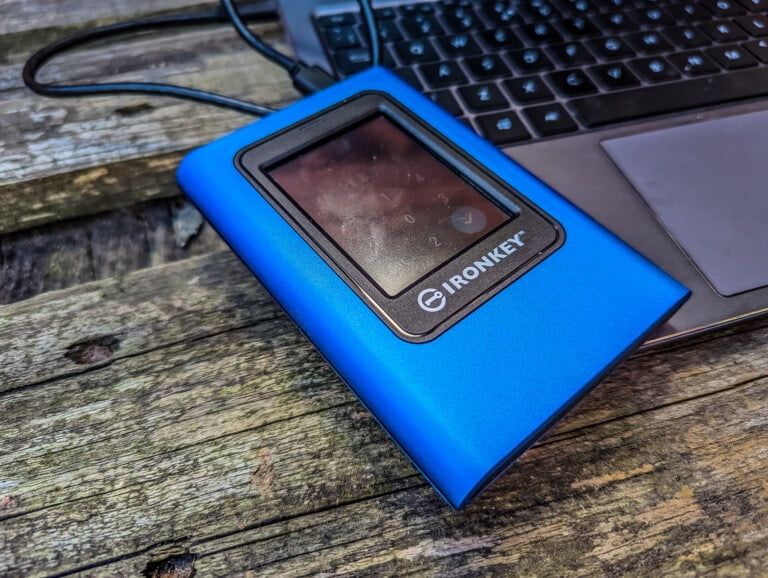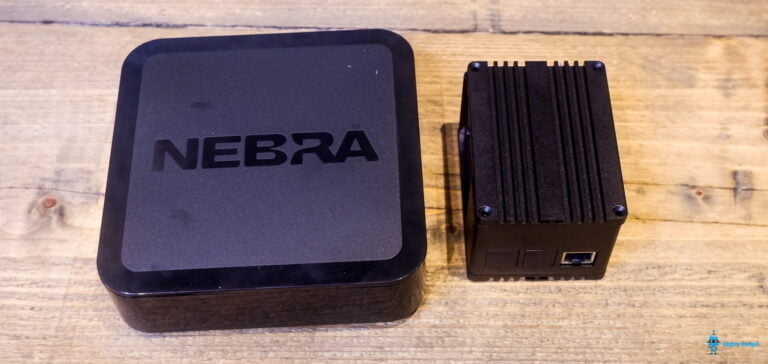Any links to online stores should be assumed to be affiliates. The company or PR agency provides all or most review samples. They have no control over my content, and I provide my honest opinion.
This is my third review of Creality 3D printers. I have previously reviewed the Creality Halot One Plus resin printer and the Sermoon V1 Pro.
The Ender Series from Creality has some of my favourite printers going; the Ender-3 S1 is no exception to this. Though it has room for multiple expansions and extras, it can still perform excellently without them.
Personally, I find the best way to learn is to get your hands on something and get stuck in. This is why I appreciate the semi-constructed design of the Ender-3 S1. This design makes for a perfect learning experience about the different parts of a printer for a beginner. It does this without the overwhelming aspect of having to tackle every piece. Additionally, constructing your own machine then shows you where all the expandable pieces of the printer are. The Ender-3 S1 had a plethora of modular extensions including, but not limited to: a laser engraver, LED lamps, and water cooling. Each module is easily connected and fitted, including a UI option to swap the operating system over to engraver mode.
Initially, I was hesitant about the Ender’s performance as Creality advertises a variety of additions, including some recommended accessories. The Ender-3 S1 needs none of them; this printer is excellent even without all the bells and whistles. The only addition I could maybe get behind recommending is the tempered glass build plate.
| Preview | Product | Rating | Price | |
|---|---|---|---|---|

| Creality Ender 3 V3 KE 3D Prinetrs, 500mm/s Max Printing... | Buy on Amazon |
Specification:
- General
- Technology: Fused deposition modelling (FDM)
- Assembly: Semi-assembled
- Mechanical arrangement: Cartesian XZ-head
- 3D Printer Features
- Build volume: 220 x 220 x 270 mm
- Feeder system: Direct
- Print head: Single nozzle
- Nozzle size: 0.4 mm
- Max. hot end temperature: 260 ℃
- Max. heated bed temperature: 100 ℃
- Print bed material: PC-coated spring steel sheet
- Frame: Aluminum
- Bed levelling: Automatic
- Display: 4.3-inch LCD
- Connectivity: SD card, USB
- Print recovery: Yes
- Filament sensor: Yes
- Camera: No
- Materials Used
- Filament diameter: 1.75 mm
- Third-party filament: Yes
- Filament materials: Consumer materials (PLA, ABS, PETG, Flexibles)
- Software
- Recommended slicer: Creality Slicer, Cura, Simplify3D, Repetier-Host
- Operating system: Windows, Mac OSX, Linux
- File types: STL, OBJ, AMF
- Dimensions
- Frame dimensions: 487 x 453 x 622 mm
- Weight: 9.1 kg
Build Plate
Central to the Ender-3 S1 is the PC-coated spring steel build plate. Removing prints is incredibly easy when using a magnetic base and a flexible platform – compared to the Ender 2’s rigid PC platform, secured with bulldog clips. However, though the platform’s flexibility is nice, the PC coating still leaves much to be desired. For example, a poorly levelled nozzle can easily damage it, and PLA residue is frequently left over after printing. Because of this, if you are repeatedly printing, or printing on any large scale, or just because you want a better experience, I recommend getting the tempered glass build plate. Glass is durable, easy to clean, and supplies surprisingly excellent adhesion.
Automatic Bed Levelling

Echoing a point I made in the Sermoon V1 Pro review, I have not reviewed two printers which use the same auto-levelling method. Typically the printer will use some form of probe or sensor to measure the distance from where it thinks zero is to where zero actually is. “Levelling” is perhaps not the right word to use as the print bed, in every system I’ve seen so far, doesn’t actually adjust. Instead, when the printer completes this automatic mesh bed calibration, they actively adjust the print layer height to counteract any slight deviations in the print bed height.

The Ender-3 S1 has two methods for levelling – Creality’s CR Touch Automatic Bed Levelling Device or standard manual levelling. Once auto-levelling is initiated, the printer deploys a tendril from the print head and probes the surface 16 times. Though not stated, I would imagine this device to be a variation of a strain-gauge sensor, similar to the one equipped to the Kobra Max. I like this levelling method as it provides a lot of visual feedback to the user about what it’s doing. However, the system isn’t perfect as you still need a Layer Height Gauge (AKA a piece of paper) to adjust the z-axis offset accordingly.

Users can adjust the z-axis via the UI in increments of 0.01mm. I was pleased to see this level of fidelity, as with the previous three FDM printers I have reviewed, they only allowed levelling in increments of 0.05mm.
Additionally, Ender-3 S1 also comes with a spare z-stop sensor that can be easily affixed to the frame and installed. The z-stop allows for an alternate manual levelling method with which you are probably familiar. I think this is a solid addition to enable the user to choose to use the traditional levelling system or as a backup system if the fancy new sensor fails.
Sprite Dual Gear Extruder
I believe the Ender-3 S1 uses the same extruder as the Sermoon V1 Pro, anointed the “Sprite Direct Dual-Gear Extruder”. This little thing has a gear ratio of 1:3.5, delivering a pushing force of up to 80N. The numbers might not mean anything to you directly, but it basically means there’s more power to shift the filament, thus creating better extrusion and retraction.
As newer models emerge, direct extruders are constantly being updated and improved upon. They are also becoming more popular in beginner 3D printers, and I don’t really know how I feel about this. The extra weight on the carriage, the weight of the spool pulling directly onto the x-axis, and the spool’s subsequent mounting and location all start to add up.
Other Bits and Bobs

Interestingly helping the direct extrusion system is the filament sensor. Personally, I don’t particularly care for filament sensors, but the location of the one on the Ender-3 S1 serves two purposes. First, the sensor helps to feed the filament from the spool into the extruder. It also helps stabilise some of the forces applied onto the spool, stopping shaking/ vibration in the printer; this reduces ghosting and other artefacts in the prints.

The printer also has dual z-axis screws to provide extra stability and accuracy in the z-axis. It’s nice to have as it balances the load between the two threads.
Knob-type belt tensioners are also nice to have. I’m glad they’re there, but at this point, I’d almost expect these basic ‘quality-of-life’ features on a printer. Especially as companies are rapidly innovating interesting new high-tech auto-levelling systems and other gizmos, I can’t really call these knobs a ‘feature’ anymore.

Print Samples





Final Thoughts
Overall, the Ender-3 S1 is a decent machine. It’s not particularly interesting, but what it does, it does really well. I was able to get some very consistent, decent prints from it, printing at considerable speeds. I’m pleased to have this in my collection.
| Preview | Product | Rating | Price | |
|---|---|---|---|---|

| Creality Ender 3 V3 KE 3D Prinetrs, 500mm/s Max Printing... | Buy on Amazon |
Creality Ender-3 S1 Review Rating
Summary
Overall, the Ender-3 S1 is a decent machine. It’s not particularly interesting, but what it does, it does really well. I was able to get some very consistent, decent prints from it, printing at considerable speeds. I’m pleased to have this in my collection.
Overall
85%-
Overall - 85%85%
Pros
- Easy to use and consistent performance
Cons
- English manual needs work
I’m Ted Culshaw, a dedicated professional adept in the realm of film, photography, and 3D design. As the brother of the chief editor at Mighty Gadgets, James, I’ve had the privilege of overseeing the reviews for a wide range of 3D printers and creative products, covering everything from photography to lighting. My academic background in film and photography, coupled with a brief stint in the TV industry, has provided me with a rich foundation in these fields, which I leverage to consistently deliver high-quality reviews.
In my current role at my father’s bespoke kitchen business, Culshaw Kitchen Makers, I am responsible for creating many of the 3D designs and CNC cutting, thereby directly contributing to the beauty and functionality of our handmade kitchens. I take immense pride in my work, and I am constantly seeking ways to improve and innovate.
Aside from this, my passion for photography and filmography extends beyond my professional life. I regularly offer freelance services to local businesses, using my skills to help them elevate their visual presence and narrate their unique stories.
At heart, I am a passionate professional who believes in the transformative power of creative design and visual storytelling. Whether it’s through reviewing the latest 3D printer or crafting a bespoke kitchen design, I am committed to delivering excellence in all my endeavours.
You can find me on Instagram
Last update on 2025-06-30 / Affiliate links / Images from Amazon Product Advertising API








